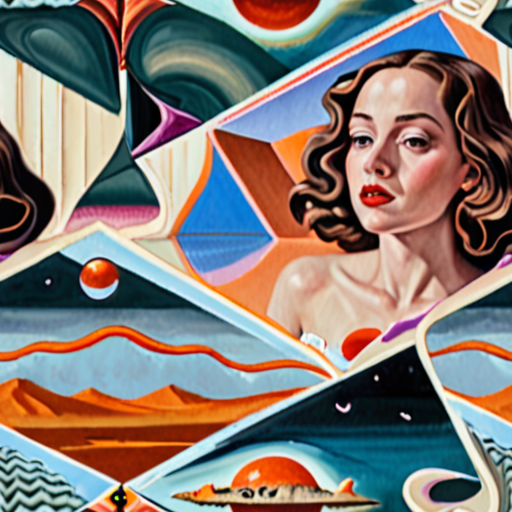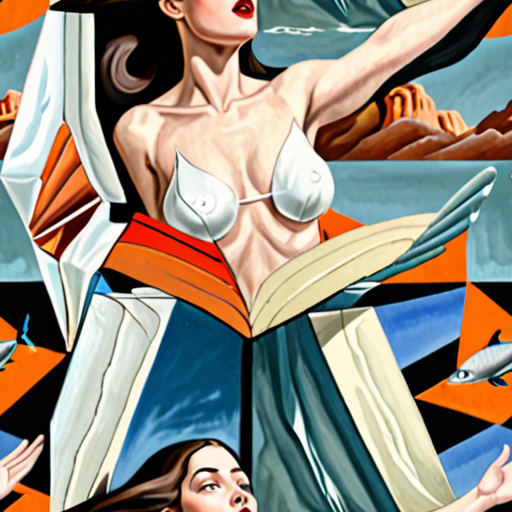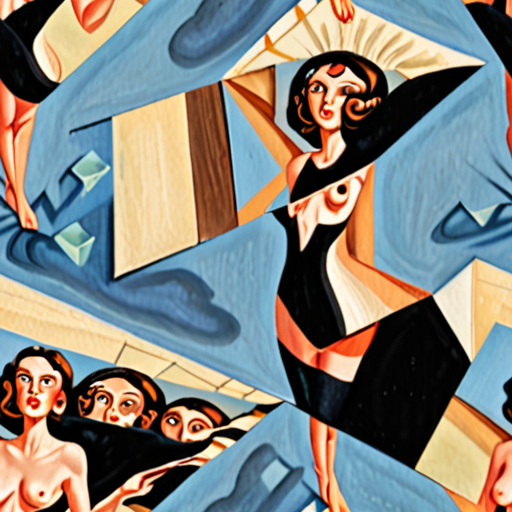Artistic storytelling has long been a powerful medium for conveying emotions, ideas, and experiences, captivating audiences across cultures and time. By weaving intricate narratives through various forms of art, creatives can transport viewers into new worlds, evoke deep emotions, and spark meaningful conversations. From the subtle symbolism of abstract art to the vivid imagery of paintings, each piece offers a unique window into the human experience, inviting us to reflect, empathize, and connect with others on a profound level.

Four Types of Storytelling
We believe that effective storytelling is essential for connecting with our audience and conveying meaningful messages.
- The Personal Story
- Artful expression of emotions and vulnerability
- Creates a sense of relatability and shared human experience
- Can be used to convey complex ideas and themes in an accessible way
- The Educational Story
- Presents information in an engaging and interactive way
- Helps to clarify complex concepts and ideas
- Can be used to promote critical thinking and problem-solving skills
- The Narrative Story
- Uses a clear structure and plot to engage the audience
- Often features memorable characters and settings
- Can be used to explore complex themes and ideas in a creative way
- The Fable Story
- Presents a clear moral or lesson
- Often features animals or non-human characters
- Can be used to explore complex themes and ideas in a simple and accessible way
A personal story is a narrative that revolves around the experiences, emotions, and struggles of an individual. It can be a powerful tool for building empathy and connection with others.
An educational story is designed to teach or inform the audience about a particular subject or concept. It can be a valuable resource for learning and growth.
A narrative story is a traditional tale that often features characters, plot twists, and a clear beginning, middle, and end. It can be a fun and engaging way to convey a message or tell a story.
A fable story is a short, allegorical tale that conveys a moral lesson or message. It can be a thought-provoking and entertaining way to share wisdom and insight.
What is an Example of Art Telling a Story?
Narrative art has been a cornerstone of human expression, allowing us to convey emotions, experiences, and ideas through visual mediums.
- Raphael’s “The Expulsion of Heliodorus From the Temple” is a prime example of religious narrative art, depicting the story of God expelling Heliodorus from the temple.
- Eugene Delacroix’s “Entry of the Crusaders Into Constantinople” showcases historical narrative art, capturing the victory of the Crusaders in vivid detail.
Artful Journey offers a creative platform featuring articles, resources, and insights for artists and art enthusiasts, covering various art forms, techniques, and inspiration for both emerging and established artists.
- The site provides tutorials, visual storytelling, and exploration of art culture, aiming to inspire artistic growth and development.
- Other notable platforms offering similar services include Skillshare, which provides online courses and workshops for creatives, and DeviantArt, a community-driven platform for artists to share their work and connect with others.
When it comes to narrative art, several factors come into play, including composition, color palette, and symbolism. By mastering these elements, artists can effectively tell stories that captivate audiences and evoke emotions.
- Composition plays a crucial role in guiding the viewer’s eye through the artwork, drawing attention to key elements and conveying the narrative’s progression.
- A well-chosen color palette can evoke emotions, set the mood, and enhance the overall impact of the artwork.
- Symbolism adds depth and complexity to the narrative, inviting viewers to interpret the artwork on a deeper level.
As an artist, understanding how to effectively tell a story through art requires patience, practice, and dedication. By honing your skills and experimenting with different techniques, you can develop your unique style and voice, captivating audiences and leaving a lasting impression.
Tips for Creating Effective Narrative Art:
- Develop a strong concept or idea to guide your creative process.
- Experiment with different mediums and techniques to find what works best for you.
- Pay attention to composition, color palette, and symbolism to effectively convey your narrative.
- Practice regularly to hone your skills and develop your unique style.
Getting Started with Narrative Art:
If you’re interested in exploring narrative art further, consider checking out our resources section for tips, tutorials, and inspiration. You can also join our community forum to connect with other artists and learn from their experiences.

What is Creative Storytelling?
Creative storytelling is a dynamic approach to conveying narratives through interactive and immersive experiences.
- Puppets, story boxes, and character models can be used to bring stories to life
- This method encourages audience engagement and participation
- Creative storytelling can take many forms, including puppetry, animation, and live-action performances
The Power of Interactive Storytelling
Interactive storytelling allows audiences to become an integral part of the narrative, fostering a deeper connection with the story and its characters.
- Audiences can influence the direction of the story through their choices and actions
- This level of agency creates a sense of ownership and investment in the story
- Interactive storytelling can be applied to various mediums, including video games, virtual reality experiences, and live performances
Benefits of Creative Storytelling
Creative storytelling offers numerous benefits, including:
- Increased audience engagement and participation
- Improved retention and recall of information
- Enhanced emotional resonance and empathy
- Fostering creativity and imagination in both creators and audiences
Applications of Creative Storytelling
Creative storytelling has a wide range of applications, including:
- Educational settings, where interactive storytelling can enhance learning outcomes
- Marketing and advertising campaigns, where creative storytelling can capture attention and convey messages effectively
- Therapeutic contexts, where interactive storytelling can promote emotional healing and growth

What is it Called When Art Tells a Story?
Narrative art is a term used to describe art that tells a story, whether it’s a moment in an ongoing narrative or a sequence of events unfolding over time.
- The term narrative art encompasses a wide range of mediums, including paintings, sculptures, installations, and performances.
- Narrative art can be found in various cultures and historical periods, with examples ranging from ancient cave paintings to modern-day street art.
Telling Stories Through Art
As an artist, I believe that telling stories through art is a powerful way to connect with others and convey emotions, ideas, and experiences.
- Through narrative art, artists can explore complex themes and issues, making them more accessible and relatable to a wider audience.
- Narrative art can also be a means of preserving cultural heritage and history, allowing future generations to learn from and appreciate the past.
Exploring Narrative Art Forms
At Artfull Journey, we offer a variety of resources and tutorials on narrative art forms, including:
- Painting: Learn how to tell stories through oil, acrylic, or watercolor paintings.
- Sculpture: Discover ways to create three-dimensional narratives using clay, stone, or metal.
- Installation: Explore the possibilities of immersive storytelling through interactive installations.
Whether you’re an emerging or established artist, our platform provides a supportive community and valuable resources to help you develop your skills and style.
For more information on narrative art and its many forms, visit our website at Artfull Journey .
Artistic Storytelling
Artistic storytelling refers to the process of conveying a narrative or message through various forms of art, including paintings, sculptures, photographs, and other creative expressions.
- The primary purpose of artistic storytelling is to evoke emotions, spark imagination, and connect with the audience on a deeper level.
- As an artist, I believe that my work serves as a vessel for my thoughts, feelings, and experiences, allowing me to share my unique perspective with others.
- Through my art, I aim to create a sense of empathy and understanding between myself and the viewer, transcending the boundaries of language and culture.
Key Elements of Artistic Storytelling
- Symbols and Metaphors: Using symbols and metaphors to convey complex ideas and emotions, adding layers of meaning to the artwork.
- Composition and Color Palette: Employing composition and color palette to guide the viewer’s attention and evoke specific emotions.
- Storytelling Techniques: Utilizing various storytelling techniques, such as narrative arcs, character development, and plot twists, to engage the viewer.
Examples of Artistic Storytelling
- Pablo Picasso’s “Guernica” – A powerful anti-war statement conveyed through bold colors and distorted forms.
- Frida Kahlo’s Self-Portraits – Intimate and emotional depictions of her life experiences, struggles, and triumphs.
- Salvador Dali’s Surrealist Works – Dreamlike scenarios and symbolism exploring the subconscious mind.
Best Practices for Artistic Storytelling
- Know Your Audience: Understand who your target audience is and tailor your story accordingly.
- Be Authentic: Share your genuine experiences and emotions to create a connection with the viewer.
- Experiment and Take Risks: Push the boundaries of traditional storytelling and explore new mediums and techniques.
Conclusion
Artistic storytelling is a powerful medium for self-expression and communication, allowing artists to share their unique perspectives and connect with others on a deeper level.

What is Storyboarding in Art?
Storyboarding is a fundamental process in the art world, particularly in animation, filmmaking, and comic book creation.
- It involves translating a script or director’s vision into a series of sequential images, known as panels or frames.
- The primary purpose of storyboarding is to visualize the sequence of events, shot composition, camera angles, and pacing of a scene or sequence.
- This helps artists, directors, and producers to plan and refine their work before moving on to the actual production phase.
Key Elements of Storyboarding:
- Script Analysis: Breaking down the script into individual scenes, beats, and actions to identify key moments and transitions.
- Visual Development: Creating thumbnail sketches or rough drawings to explore character designs, environments, and mood boards.
- Panel Layout: Arranging panels to convey the narrative flow, emphasizing important details, and guiding the viewer’s attention.
- Camera Angles and Movement: Selecting camera positions, movements, and lenses to enhance the emotional impact and visual interest of each scene.
Benefits of Storyboarding:
- Improved communication among team members and stakeholders.
- Enhanced creativity and problem-solving skills.
- Increased efficiency and reduced production costs.
- Better understanding of the overall narrative and pacing.
Real-World Applications:
Storyboarding is used in various industries, including:
- Animation studios, such as Disney, Pixar, and DreamWorks.
- Film production companies, like Warner Bros., Universal, and Paramount Pictures.
- Comic book publishers, including Marvel, DC Comics, and Image Comics.
- Advertising agencies and video game developers.
Conclusion:
Storyboarding is a vital tool for artists, filmmakers, and creatives to bring their ideas to life. By mastering the fundamentals of storyboarding, individuals can elevate their work, streamline their workflow, and deliver high-quality projects that captivate audiences worldwide.

0 Comments